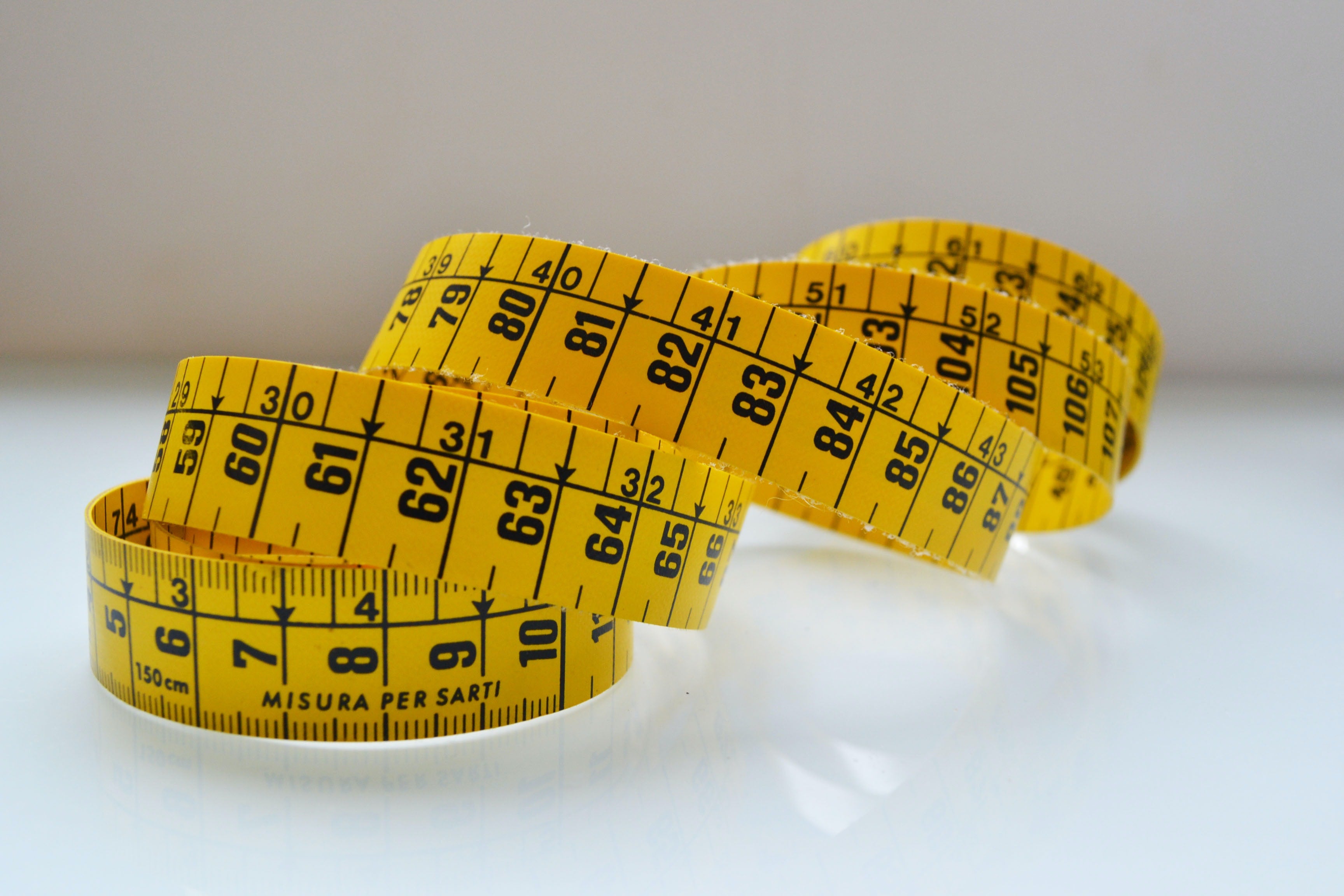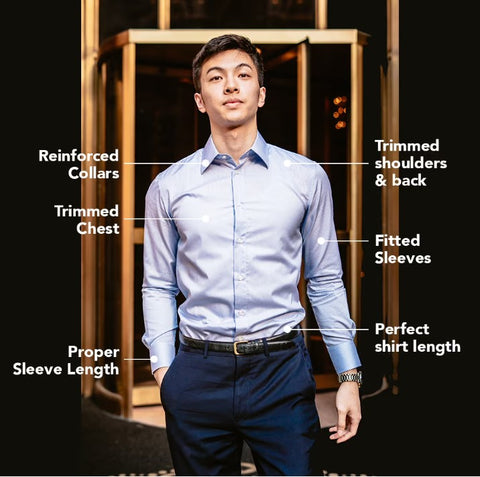
Introduction
Why do we need to know how to measure the waist for pants? Because there are so many brands out there in an increasingly global world and we have yet to develop a unified measurement system for pant sizes.
No matter the type of pant, it’s important for professionals to be aware of their specific pants size not only for the ease of online shopping, but also to be able to dress in an elegant, clean cut manner.
Naturally, if you’re unaware of your sizing, you can always learn how to cuff pants for a different style, but all professionals will eventually need well-fitted pants at some point in their lives and know where is waist measured.
In the article below, we’ll go through the steps in measuring waist for pants, how to translate that into sizes, how to read a measuring tape, and why it’s important to know how to properly measure your waist.
It won’t be a comprehensive article, but it is a simple, easy-to-follow men’s pants measurement guide about where is the waist measured.
How to Measure Men’s Pants Size
There’s actually a multitude of ways to measure pants, from the everyday waist and pants length measurements, to a comprehensive guide on all the measurements needed to measure pants. There are a couple of main points that are considered, such as the natural waist, inseam length, out-seam, front and back seat, and the pants opening.
Unless you want to have specially tailored pants or you’re writing a men’s pants measurement guide in the future, you’re not going to need to know all those. The main two that are usually used to create pants size are the inseam and the waist measurements.
But today, we’re going to focus on the waist measurements, as that is the most important fit to consider when buying pants.

How To Measure Waist
In order to figure out pants measurement, men’s edition, you’re going to need a couple of additional items. You’re going to need a measuring tape and something to write your waist measurement down on. But from there, it’s only a few simple steps.
1. Obtain a Flexible Measuring Tape
If you don’t own one already, you can always buy a tailor’s measuring tape or a soft measuring tape at a fabric store or a convenience store. It’s a useful flexible measuring tape to have.
2. Figure Out Where to Measure the Waist
You should be measuring the waist around the belly button area. You need to be below the ribs and above the hips, which should work out to be just above the belly button.
3. Measure the Waist Correctly

Wrap the tailor’s tape around the natural waistline area, but do not wrap it extremely tight. It should be a loose fit around the waist. You should be able to fit at least one finger in between your waist and the tape. Breathe out naturally and take the waist measurement to understand "what is my waist size."
4. Convert to Sizing

If you’re measuring in centimeters, you should round up to the next even number. For example, if you have a 31 inch waist, you should round up to 32 inch. And if you’re in between two numbers, you should always round up to the next whole even number. For example, if you have a 31.5 inch waist measurement, you should look for the 32 inch pant sizes.
In summary, use a flexible measuring tape and wrap it around the natural waistline, just above the belly button. Ensure the tape is snug but not too tight, allowing room for one finger. Round up to the next even number for accurate sizing when converting to pant measurements.How Measure without Tape
If you’re looking for the most accurate way of measuring waist for pants, then you’re going to need a tape measure and a flat surface. However it’s not impossible to measure the waist for pants size without tape.
If you want to know how to measure your waist without a tape measure, the best way would be to find a pair of pants that you already own.
- Step 1: Lay a pair of pants that you own that fits well on a flat surface.
- Step 2: Use a virtual ruler app on your phone (the most recent iPhones already provide this feature or you can always download an app) to measure the length of the waistband.
- Step 3: Multiply the measurement by two to get your suggested waistband size.
How to Measure Leg Length
How to measure leg length for pants is the next step you’ll need to figure out your entire pants sizing. It’s just as important to have accurate measurements for the pants legs as the waist, but it is more forgiving.
Because you can adjust pants legs by either cuffing or shortening the pant legs, as long as the waist measurement fits well, the pant legs can be a bit longer.

To measure leg length for pants size, you should measure the length of your inseam. This will go from the highest point of your inner thigh, around your crotch seam, to your ankles, where you would like your pant length to sit.
It would be best to take these measurements with your shoes off, or get some help in measuring the inseam length.
You'll want to take the same steps regardless of wearing high rise, or high waisted pants or low rise pants as we're measuring natural waistline, rather than the garments themselves.
Converting Measurements to Sizes
With both your waist measurement and the inseam measurement, you should be able to find the accurate pant size from brands or use these measurements to fit into a small, medium, large, extra large, etc.
As a note, most brands’ waist measurements are not true to size. They tend to add a couple of inches to the waist measurements. For example, a size 32 waist might actually measure 34.5 inches.
The industry standard is to add an inch to 1.5 inches. But do keep in mind that some fabrics tend to shrink after being washed, so you can use your true measurement to round up or down as needed.
Importance of Properly Fitted Pants
Imagine walking into a job interview, a date, or even just casually around your neighborhood in pants that are either too long or too short and are falling off your waist.
While that might work for the street style, it simply looks sloppy in a professional manner. Everyone eventually needs clothing that fits well like our professional dress shirts.
It gives a great first impression when you walk into any professional setting with a pair of well fitted pants with a perfect slim fit mens white dress shirts, because it shows that you can take care of yourself.
Nimble Made makes dress shirts based on body mass index and body fat. They take into your height and weight into proportion to make the best slim fit shirt out there.
Be sure to also check out our guide on how to take hip measurements, measure pant length, measure shoulder width, and how to measure sleeve length .
Consider Vanity Sizes
Vanity sizing is a marketing strategy used by clothing brands to make their customers feel better about themselves and their bodies by assigning smaller clothing sizes to garments than the standard measurements would suggest.
In other words, vanity sizing involves labeling clothes with larger sizes than they actually are, leading individuals to believe they wear a smaller size than they truly do. This practice can boost customer satisfaction and self-esteem, potentially encouraging more purchases.
However, vanity sizing can also create confusion and frustration for shoppers, as they might find themselves fitting into a smaller size in one brand while needing a larger size in another, leaving customers dependent on a brand's men's clothing size chart to determine the right pant size.
This phenomenon blurs the lines between accurate sizing and societal perceptions of body image, ultimately influencing how people perceive their own bodies and impacting their shopping choices.
Conclusion
It’s very important to know and consistently update your measurements to ensure that your clothes fit you. In learning how to measure your waist for pants, you’ll save yourself a lot of headache shopping online by not having to order multiple sizes to try the fit if you know exactly how you fit into your pants.
It’s easy to measure, all you need is either a pair of pants or a measuring tape and you’ll be able to have your specific waist and leg measurements.
Waist Measurement FAQ
How to measure waist size for pants?
To measure your waist size for pants, follow these steps:
- Find Your Natural Waist: Locate the narrowest part of your waist, usually just above your belly button.
- Use a Measuring Tape: Wrap a measuring tape around your waist at this point, keeping it level and snug but not too tight.
- Check the Measurement: Make sure the tape is parallel to the floor and take note of the measurement in inches. This is your waist size.
What size is a 34 inch waist?
A 34-inch waist typically corresponds to a size Large (L) in men's pants, but sizing can vary slightly between brands.
For women’s pants, a 34-inch waist usually falls into the size 14-16 range, depending on the brand and fit. Always check the specific sizing chart of the brand you're buying from for the most accurate fit.
What is a 32 waist in pants?
A 32-inch waist generally corresponds to a size Medium (M) in men’s pants. For women’s pants, a 32-inch waist usually aligns with a size 10-12, though this can vary by brand. It's always a good idea to refer to the brand's sizing chart for the most accurate fit.
What is a 36 inch waist in pants?
A 36-inch waist is typically a size Extra Large (XL) in men’s pants. For women’s pants, a 36-inch waist usually corresponds to a size 16-18. Sizing can differ between brands, so checking the specific brand's sizing guide is recommended for the best fit.



Comments (0)
Back to News